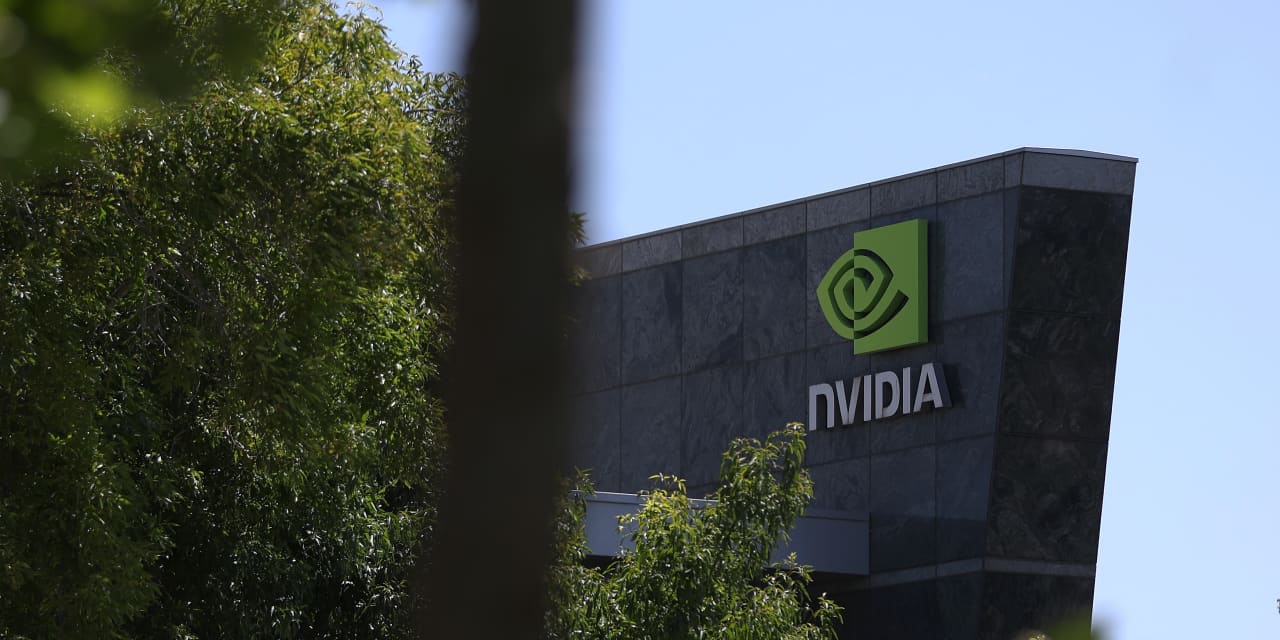After briefly being anointed king of the stock market, Nvidia is being hit hard. Although that could be a warning sign for investors worried this year’s rally has relied too much on a few big tech names, there are lots of ways to dodge bubblelike prices while also staying broadly invested.
Just last Tuesday,
briefly passed
to become the world’s most valuable company. Since then, investors have turned on the maker of chips for artificial intelligence, sending its shares down nearly 13% in the past three trading days.
Nvidia’s woes aren’t just a potential problem for AI evangelists. Nvidia and other members of the so-called Magnificent Seven club of tech stocks have been driving much of the overall market’s gains for the past several years. Tech stocks now have a weighting of about one-third in the
up from less than 25% in 2019.
Nvidia’s valuation—it is trading at about 70 times earnings—suggests the stock could have farther to fall. While price/earnings ratios for other tech names that dominate the market aren’t as extreme, those stocks are also richly valued. Stocks that make up the
exchange-traded fund trade at 29 times earnings, according to Morningstar, well above the broader market’s 21 times.
For investors, the combination of big index weightings and lofty valuations poses a risk. If traders were to suddenly sour on big tech stocks, weakness in that sector alone could be enough to trigger a bear market, notes independent Wall Street researcher Jim Paulsen.
Advertisement – Scroll to Continue
“The infamous Mag7 (and maybe a handful of other notables) have risen spectacularly in price and if they collapse—because of their outsized weightings—the S&P 500 Index could suffer a 20%+ decline,” he writes.
Fortunately, Paulsen also notes, the top-heavy nature of the market contains a silver lining. While Nvidia and other top tech stocks been surging forward, many corners of the market—including materials, industrials and consumer discretionary stocks—have been left behind. They have achieved average annual returns in the low-to-mid single digits over the past few years.
“Normally, when the S&P 500 is extended and overbought, most stocks within the index have enjoyed significant participation in the Bull and the S&P shows widespread vulnerability to a Bear,” writes Paulsen. “In the contemporary Bull market, however, concentration has been so intense, most stocks have not participated excessively making the Bear’s job much more difficult.”
Advertisement – Scroll to Continue
Today’s price/earnings numbers reflect this dynamic, providing investors wary of valuations like Nvidia’s plenty of opportunity to bet on the stock market without getting caught in the froth. Take a look at the Invesco S&P 500 Equal Weight ETF, which owns a roughly equal amount of every stock in the index, rather than matching stocks’ weightings to their market values, as the S&P 500 does.
The fund’s allocation to technology stocks is a significant, but not overwhelming 16%. Its portfolio is trading at 18 times earnings, a hair below the market’s long-term average of 19.
Small-company stocks, which have lagged behind large-cap stocks eight out of the past 10 years, are another approach. The
is even cheaper: The stocks it owns trades at just 15 times earnings on average.
Advertisement – Scroll to Continue
To be sure, betting on underperforming stocks means investors may miss out on some of big tech’s AI-fueled momentum. But when sentiment changes, the market is far less likely to punish stocks whose prices seem easily justified by their quarterly profits.
It could spare investors some major pain.
Write to Ian Salisbury at ian.salisbury@barrons.com
#Nvidia #Stock #Cracking #SideStep #Damage,
#Nvidia #Stock #Cracking #SideStep #Damage
